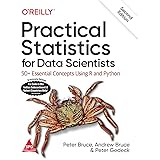What is the future of data analytics?
What is the future of data analytics?, Over the past five years, data analytics has become an important and integral part of business in every sector of the economy.
But now, what does the future hold?
In this article, we’ll discuss some of the most important trends to look out for in the data analytics industry over the next few years and how these changes will affect your company or business in both positive and negative ways.
Big Data Analytics
Small Businesses Face Problems Bigger Than Ever: Unless you’ve been living under a rock, you know that we are living in a technological era ripe with innovation.
Along with that comes great opportunity—and also major issues. With data analytics as one of today’s hottest topics, there are many small businesses that have their hands full figuring out how to make sure they’re getting their money’s worth.
That doesn’t even include creating enough analytic value in an affordable way!
How do you make sure your business stays on top without taking its eye off what makes it great?
Just look at three leaders in data analytics for answers. Their insights might surprise you.
Artificial Intelligence
AI or artificial intelligence has grown rapidly in popularity over recent years and will continue to do so. The ability for computers to learn and act upon that learning without human intervention means that there’s a huge opportunity for data analytics in general.
In fact, more than 50% of large organizations already have some sort of AI-powered solution available for customers.
The technology itself has potential applications across a variety of industries, including health care, finance, retail, and logistics.
For example, an AI-powered system could be able to read your medical records (or scan your photo) to determine if you are at risk from a certain disease—allowing doctors to treat you before any physical symptoms appear.
Internet of Things
You might not think about it, but the Internet of Things (IoT) data is big. Big in volume and big in variety.
At the time of writing, there are over 15 billion IoT devices producing more than 6.5 petabytes worth of data every day.
In 2022, we’ll see 50 billion IoT devices connected to sensors, smartphones, PCs, and even industrial machines.
It’s clear that our ability to collect, store and analyze huge volumes of data at a pace we could never have imagined ten years ago will be critical to how we live our lives tomorrow.
So what exactly do these numbers mean for data analytics?
Let’s take a look at three areas where an increased reliance on IoT data will affect our lives
Printing

There was a time when storing data meant printing it out. Keep in mind, there were no computers back then and printing simply meant copying information onto paper.
Today we have technology that can store our data in digital format, so there’s no longer any need to print anything.
There are some benefits to having hard copies of your data, though: backups and accessibility (if your computer crashes, you won’t lose everything).
That’s why companies still use printers for certain jobs; you’ll need one if you’re running a business or planning on going into business for yourself.
This guide will help walk you through some of those considerations as well as general printer information and upkeep.
Robotics
Industrial robots are now able to handle more varied tasks and work alongside humans, especially when jobs are dangerous or require precision.
Industrial robots have been around for a long time, but their speed, precision, and dexterity have improved dramatically in recent years.
In fact, some companies are now building factories with assembly lines consisting only of industrial robots.
Most future workers will interact with industrial robots on a daily basis—if they haven’t already done so at their place of employment!
Cloud Computing
The future of data analytics is cloud computing. But, how do you know if it’s right for your company?
Look at what kind of technology you have in place currently and think about how a move to a more streamlined, efficient system could benefit your business moving forward.
Think about what it would take to implement an advanced solution in-house, rather than paying for monthly access to a server somewhere that processes everything for you.
It might seem like more work now but looking into the scope suggests that there are several advantages that come with cloud computing, including increased security and disaster recovery preparedness.
Future trends in data analytics
Looking ahead, four critical trends will likely shape how business intelligence (BI) and data analytics are used in organizations.
First, emerging technologies such as artificial intelligence (AI), augmented reality and machine learning will continue to broaden their influence.
Second, more organizations will take advantage of open-source software options for BI and data analytics purposes—which could help make these tools more widely available.
Third, IT leaders’ growing comfort with using business applications built by third-party vendors—also known as SaaS applications—will prompt them to evaluate a wider range of BI products.
Finally, analysts predict that continuing concerns about cloud computing security issues in healthcare—along with cost considerations—will prompt many hospitals to stay away from cloud-based BI or data analytic solutions for now.







